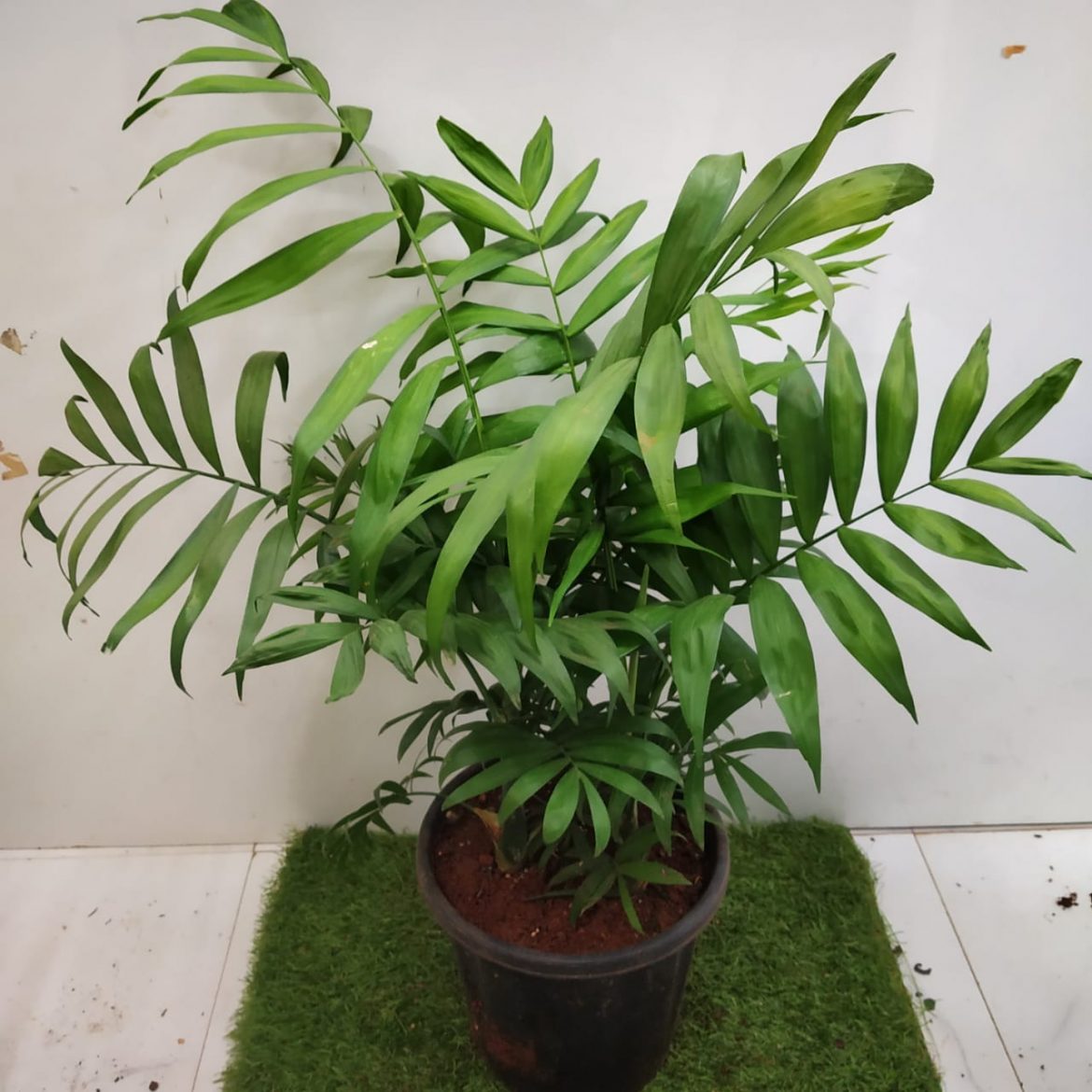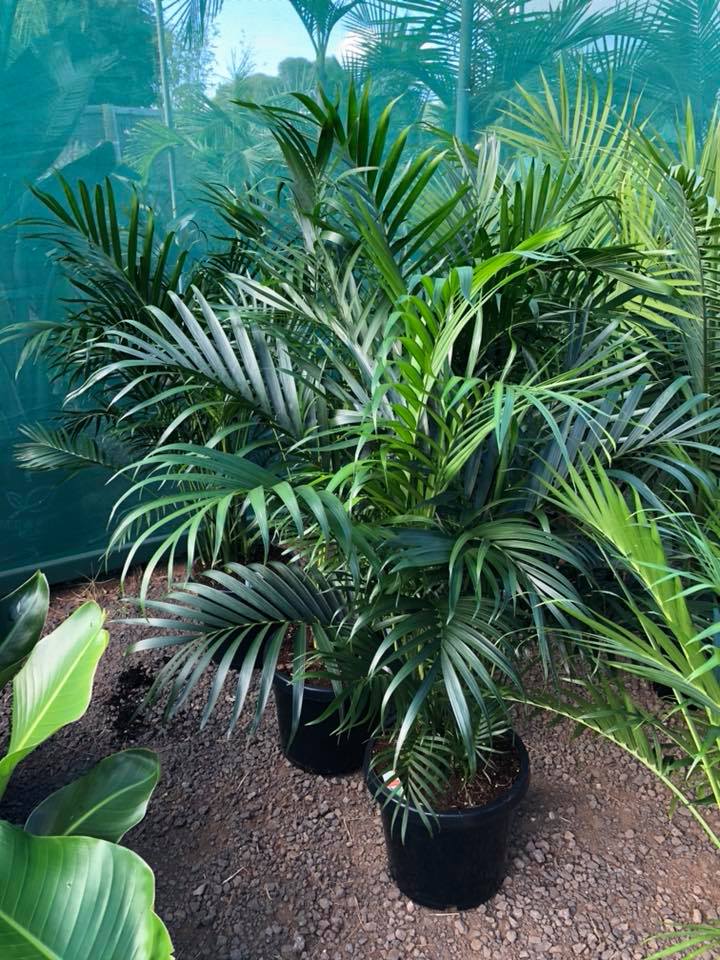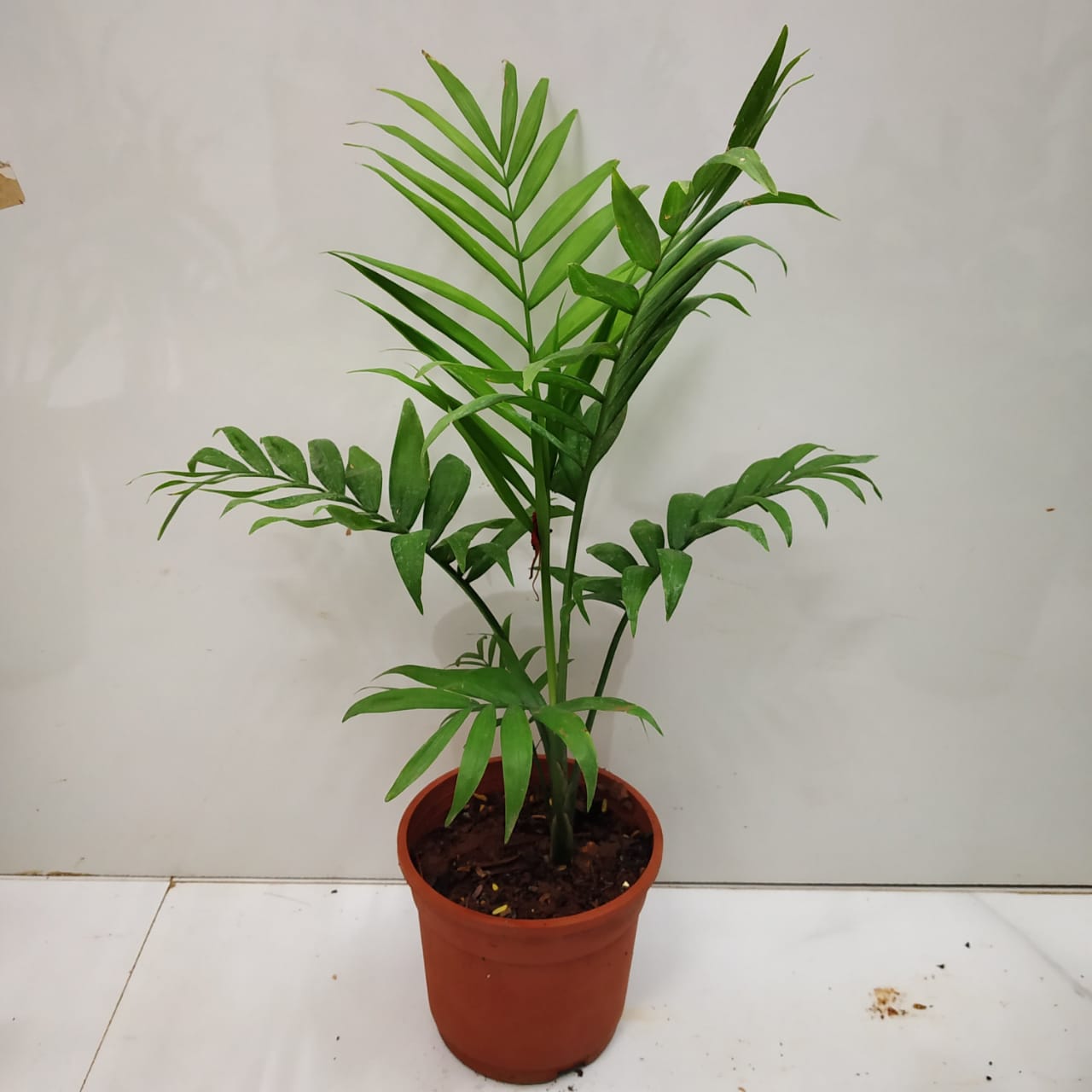Chamaedorea Palms Uncovered: Your Storybook Guide to Growing Green Elegance

Chamaedorea Palms: A Problem-Solver’s Master Class (From First Leaf to Expert Lushness)
You’ve probably seen them—the effortless elegance of a Chamaedorea palm, perched in a designer corner or lending tranquility to humming workspaces. But behind their serene beauty is a plant with a surprisingly complex personality. Over the years, my journey from killing my first Parlor Palm in six weeks to maintaining an entire “rainforest nook” at home has shown me this: There are no shortcuts, just strategy—and a little humility. Let’s throw away the copy-paste care blurbs and get real about living with Chamaedoreas.

SECTION 1: Why Even Bother with Chamaedorea? (And When Not To)
Let’s start by reframing the question everyone asks: “Are these really easy plants?”
The honest answer—I’ve watched total beginners keep Chamaedoreas pristine for years… and I’ve also rescued $40 specimens from skilled gardeners who under- or over-loved them to collapse.
The Real Draws:
- NASA certified (yes, actual scientists): cleans benzene and formaldehyde from air.
- Practically impossible for cats/dogs to poison themselves on.
- You want subtle luxury without needing floor-to-ceiling sunlight.
When NOT To Choose One:
- If you live in sub-30% humidity most months and refuse to supplement it, expect crispy leaves.
- Huge fans of dramatic color? These palms stay green—think Chanel black dress, not raucous patterns.
Sometimes, knowing what doesn’t fit your space is the best time-saving hack there is.
SECTION 2: Meet the Family – And Your Options
In 2018 I botched my first ID attempt, thinking I’d bought a Parlor Palm—turns out it was a Cat Palm. It mattered more than I realized! Here’s how not to make my mistakes:
| Species | My “Real World” Nickname | Ideal Use | Risk for Beginners |
|---|---|---|---|
| Chamaedorea elegans | “Desk Champ” | Small spaces | Very Low |
| C. seifrizii | “Instant Green Divider” | Room partitions | Moderate (root rot) |
| C. cataractarum | “Bathroom Jungle King” | Moist rooms | Moderate (humidity!) |
| C. metallica | “Designer’s Secret Weapon” | Conversation starter | Low |
Pro-tip after seeing dozens in action: If you want hard data, Parlor Palms survive light neglect better than any cousin—yet Bamboo Palm brings drama when you’re ready for statement planting.
SECTION 3: Mastering The Fundamentals – Beginner Stage
3a. Buying Right Is Half the Battle
I’ll confess: my clearance-rack rescue nearly ended up as compost because it hid root mealybugs under lush foliage. Always unpot at least partially before purchasing—nursery staff have always let me check, especially if I ask about root health and drainage holes like I know what I'm doing!
Checklist:
- Check undersides and leaf bases with your phone flashlight.
- Press base of stems gently—a healthy palm rebounds; mush means run!
- Skip any that are bone dry unless you want a year-long rehab project.
3b. Potting Like An Expert From Day One
Forget whatever pot came with your palm; half of them are packed in waterlogged peat as shipping insurance, not actual care.
Starter mix breakdown I use every time:
- 2 scoops coco coir (“keeps moisture but doesn’t smother roots”)
- 1 scoop perlite for airflow
- Big pinch of horticultural charcoal—absorbs mystery gunk if you overwater
Cost estimate: $10–12 gets you enough mix for three repots (cheaper than discarding a sickly palm later).
Terracotta pots teach new growers about water loss fast—the first week after switching from plastic, be ready for daily checks as soil dries quicker than plastic hides it.
3c. Location Matters More Than You Think
Ignore generic advice about ‘bright indirect light’ until you measure your own space! The first winter in my north-facing living room proved that lux levels drop below 500 even at noon—that meant supplementing with a clamp-on Sansi LED ($23).
Shadow test:
- If your hand cast on the wall looks faint and fuzzy = indirect light
- If it’s sharp and dark = too much sun
(Most people guess wrong without trying this!)
Humidity hack learned post-pandemic lockdown? Put palms atop trays of aquarium gravel soaked with distilled water—not only functional but visually zen-like when sunlight glints off wet stones mid-morning.
SECTION 4: Watering – Going Beyond “Don’t Overwater”
Every guide says don’t drown it—but how? The moment I stopped treating all seasons alike was revolutionary:
My Weekly Water Log System
March–October:
- Top inch of soil barely dry? Water thoroughly until runoff.
November–February: - Wait until top two inches dry; skip one watering out of every four compared to summer schedule.
Special trick learned after losing two palms to hidden saucer floods: set timers to check back ten minutes after watering so you never leave runoff sitting at the roots.
If your tap smells heavily chlorinated or leaves white residue as mine did post-plumbing renovation in early ‘22—switch immediately to filtered water or let tap sit overnight before using it on these palms.
SECTION 5: Intermediate Hacks & Mistake-Proofing
Let’s raise the bar beyond survival mode—with tested tweaks that made all the difference in my collection:
Rotate Every Month – Or Watch Lopsided Palms Emerge
Try marking your pot rim discreetly (“front” side). Watching foliage lean toward windows over months taught me why pros rotate their plants like tires for even wear!
Feed With Precision—And Don’t Assume More Is Better
In my experiments comparing slow-release vs liquid feedings—
- Monthly half-strength liquid fertilizer during peak growth worked better than bimonthly full strength.
Cost breakdown last year: $8 bottle of Dyna-Gro lasted May through October across four palms!
No visible gains appeared when doubling up except salt crust buildup and lower leaf edge burns in late summer heatwaves.
Dealing With Brown Tips Without Losing Sleep
Brown tips drove me nuts until I realized (thanks to lurking plant forums) it's rarely disease—it’s humidity or minerals building up over time. Flushing soil every other month made sudden browning nearly vanish by last winter.
SECTION 6: Advanced Care Techniques – Become an In-House Consultant
Ready for expert-level moves? This is where deep rewards—and bigger risks—show up:
Propagation Playbook (For Those Who Dare)
Most guides skip real talk here—propagating from division only works on clumping species (like Bamboo Palm). Tried dividing single-stem Parlor Palms twice… both failed spectacularly within weeks despite careful technique; those roots hate meddling unless they’re already bursting from their container!

Seed propagation is rewarding but slow-motion gardening:
Set seeds atop moist perlite/coco coir blend ($7 heat mat underneath gives >50% germination vs <10% at room temp).
Patience payoff: My record so far is eight months between sowing and above-soil sprout for C. elegans seeds collected while traveling Nicaragua spring ’19!
Seasonal Tune-Ups
By June each year, older leaves yellow naturally even on thriving plants; removing only fully-yellowed fronds at base keeps things tidy without stressing new growth.
Mid-winter blues? Add cheap clamp lights set ~12" above tallest foliage on programmable timer—my own Cat Palm perked up measurably within two weeks last January when daylight dwindled below nine hours/day here in Michigan.
SECTION 7: Diagnostics – Turning Trouble Into Triumph
Here are field-tested solutions drawn straight from personal disasters—and recoveries:
A) Yellow Dropping Leaves?
Occasional is normal; sudden cascade = root stress due to either soggy conditions or abrupt dry-out during heat spikes.
Quick test? Gently tug affected stem—it should resist slightly before snapping off when dead; if mushy/soft-smelling at base… rot has set in below ground level.
Case File Spring ’21:
I fixed cascading leaf drop by swapping sub-irrigated pots back into classic terracotta + re-potting into chunky mix — three weeks later new fronds resumed appearing like clockwork!
B) Spider Mites & Mealybugs Takeover?
Neem oil spray diluted per label + microfiber cloth wipe-down worked best after chemical sprays left burn marks once during experimentation on sensitive new fronds.
My system:
- Clean visible bugs/webbing off manually,
- Spray lightly weekly x3,
- Isolate suspect plant further away from others (“quarantine!” label helps housemates remember).
C) Static Growth All Summer?
Check root ball next spring—you’ll likely find circling roots madly searching escape routes or spent compacted soil robbing oxygen flow.
Solution that didn’t fail me yet: gentle loosening around base + step-up repot one size larger just as new growth starts.
SECTION 8: Multiple Methods = Flexible Success
No guide fits all scenarios—that's why truly mastering Chamaedoreas means tailoring techniques:
Low Humidity Apartment:
Cluster three-plus moisture-loving plants together + daily pebble tray refill yields >45% localized RH—even if main room lingers around 30%.
Workplace Maintenance:
Weekly dusting = fewer pest outbreaks during heated office winters; colleagues now trust me as resident plant medic after watching suffocating Boston ferns revive once given same regimen applied to our lobby Bamboo Palms!

On-the-cheap Lighting Fix:
DIY foil reflector taped behind lamps boosts under-canopy growth by ~20% lux reading according to measurements via smartphone app Lux Light Meter Pro.
SECTION 9: Tools That Actually Make Life Easier
My must-haves (with links where possible):
- Soil Moisture Meter ($9-$15)—saves hundreds in replaced plants over time!
- Long-nose Watering Can
- Microfiber Dust Mitt
- Affordable Tabletop Humidifier
- Dyna-Gro ‘Grow’ Food/Year Supply
- Digital Hygrometer/Thermometer Combo
Having tried more gadgets than I care to admit—these select few became non-negotiables.
SECTION 10: Blueprint Roadmap – Begin ➡️ Thrive ➡️ Expert Status
If you're determined not just to avoid killing your palm—but actually grow something magnificent, try this roadmap built from repeated experiments:
PHASE ONE (First Month): Survival & Acclimation
- Place away from any AC/heater vents.
- Limit direct sun exposure until roots settle post-repot (<60 mins/day filtered light).
- First deep soak seven days after arrival—not day one!
PHASE TWO (Months Two-Four): Routine Perfection
- Set care reminders based on actual results (“check topsoil dryness each Saturday AM”, etc.).
- Document changes monthly via phone photos—a life-saver catching pests early!
- Experiment modestly with feeding/humidity upgrades rather than everything-at-once changes.
PHASE THREE (Next Year Onward): Advanced Growth & Expansion
- Attempt division only during active root season if growing clumping types.
- Volunteer knowledge within local plant swap groups—or share lessons anonymously online!
- Consider trial-and-error pairings such as growing ferns below tall Chamaedoreas for naturalistic indoor layering effects.
Mature Insights – What No Other Guide Will Tell You
After seven years and eleven palms spanning all four major species commonly found in U.S nurseries, here’s what makes mastery different from mere success:
Failures are part of leveling up—a brown edge or unlikely pest simply mean feedback loops faster next round.
Few moments match watching new fronds slowly unfurl through morning window light…or answering rookie questions with quiet confidence born only out of wrangling those same headaches yourself year prior.
In sum? A thriving Chamaedorea isn’t luck—it’s deliberate problem-solving performed again and again.
Bookmark this master class so you can return whenever growth stalls—or celebrate unexpected bursts of green! And remember, mastery starts not when nothing ever goes wrong…but when every setback fuels another step forward.
Your rainforest oasis awaits—in miniature form or maximalist style—and now you hold every tool needed not just for survival…but true lushness.
Welcome to true palm whisperer territory!



